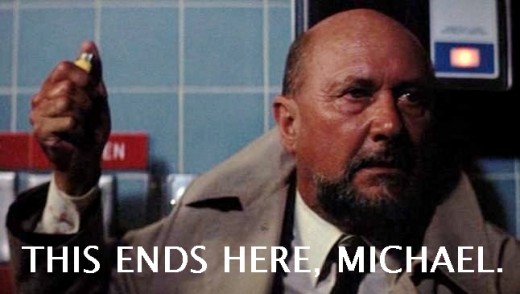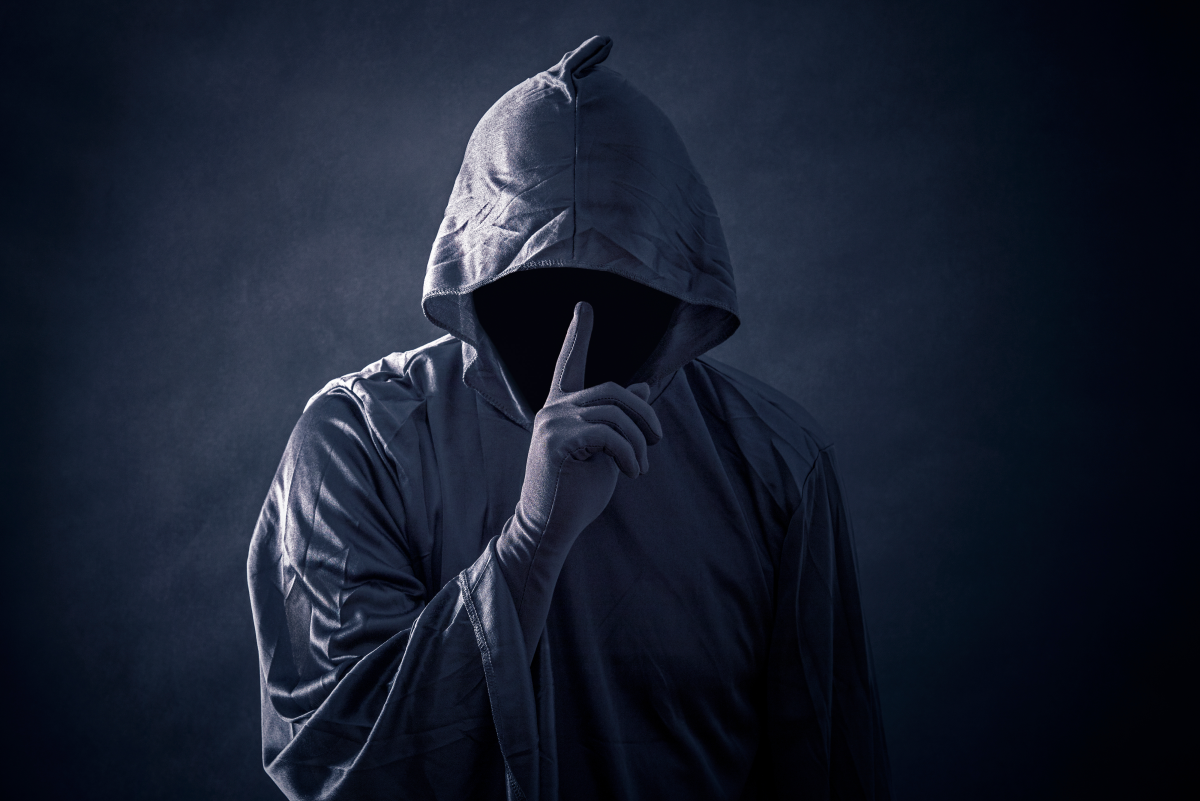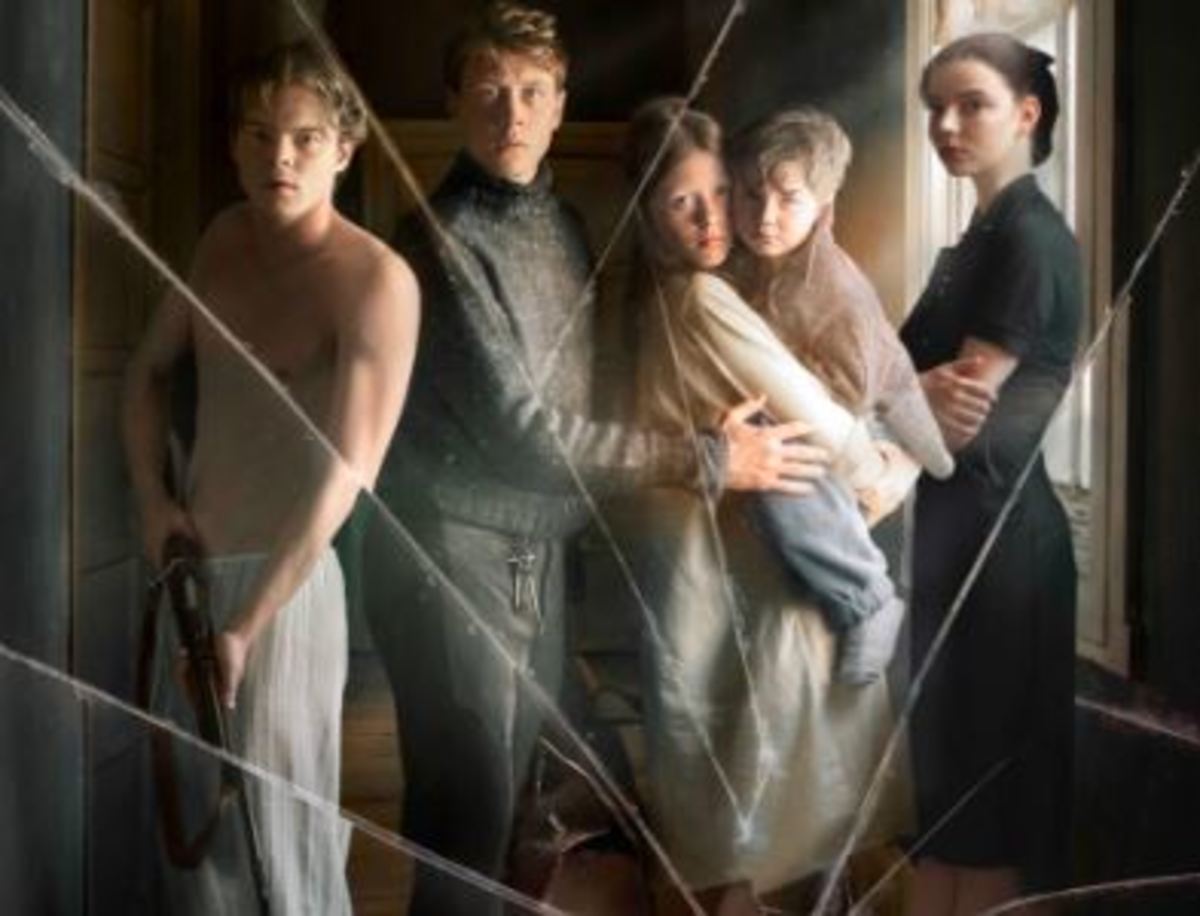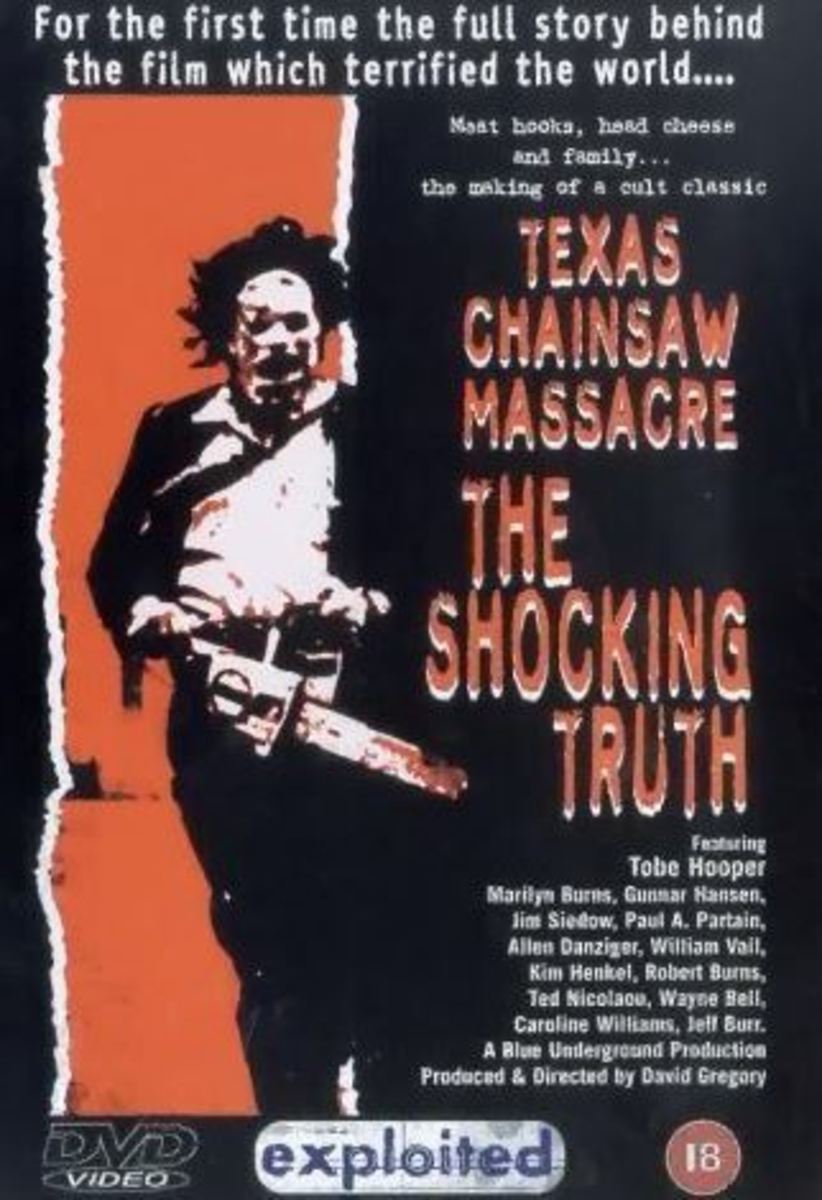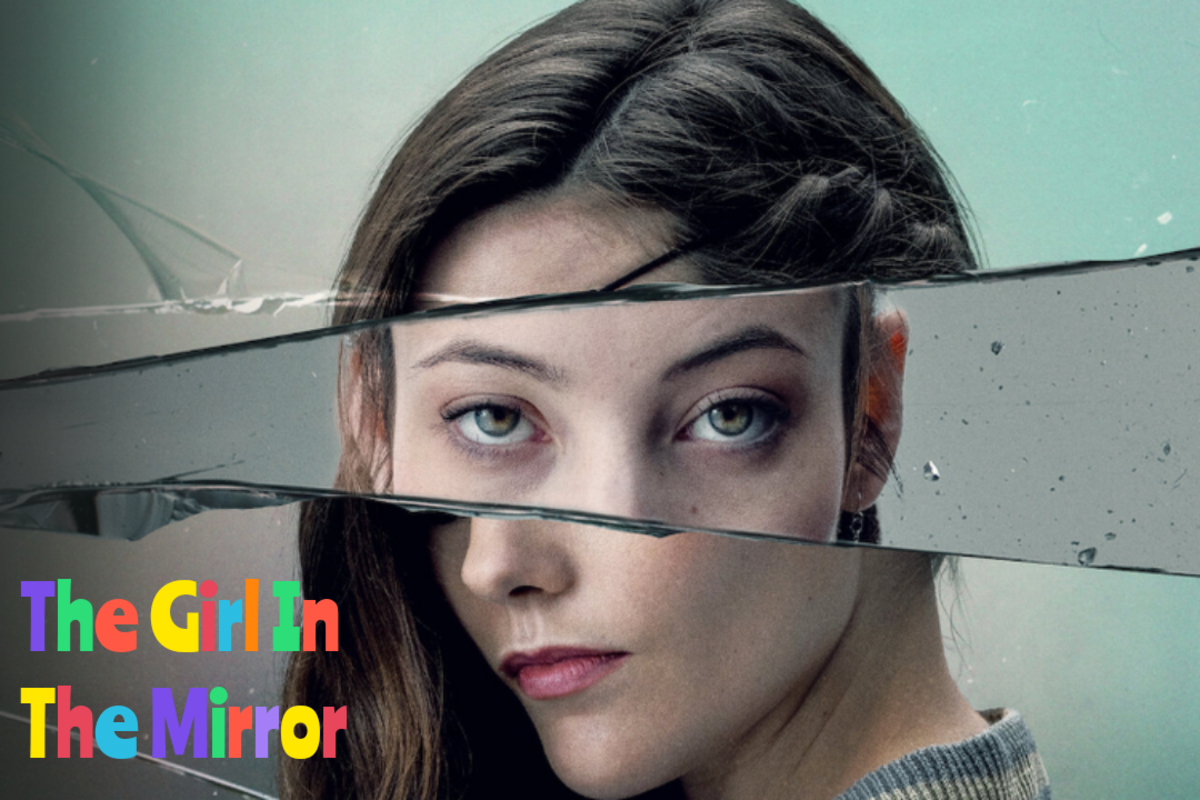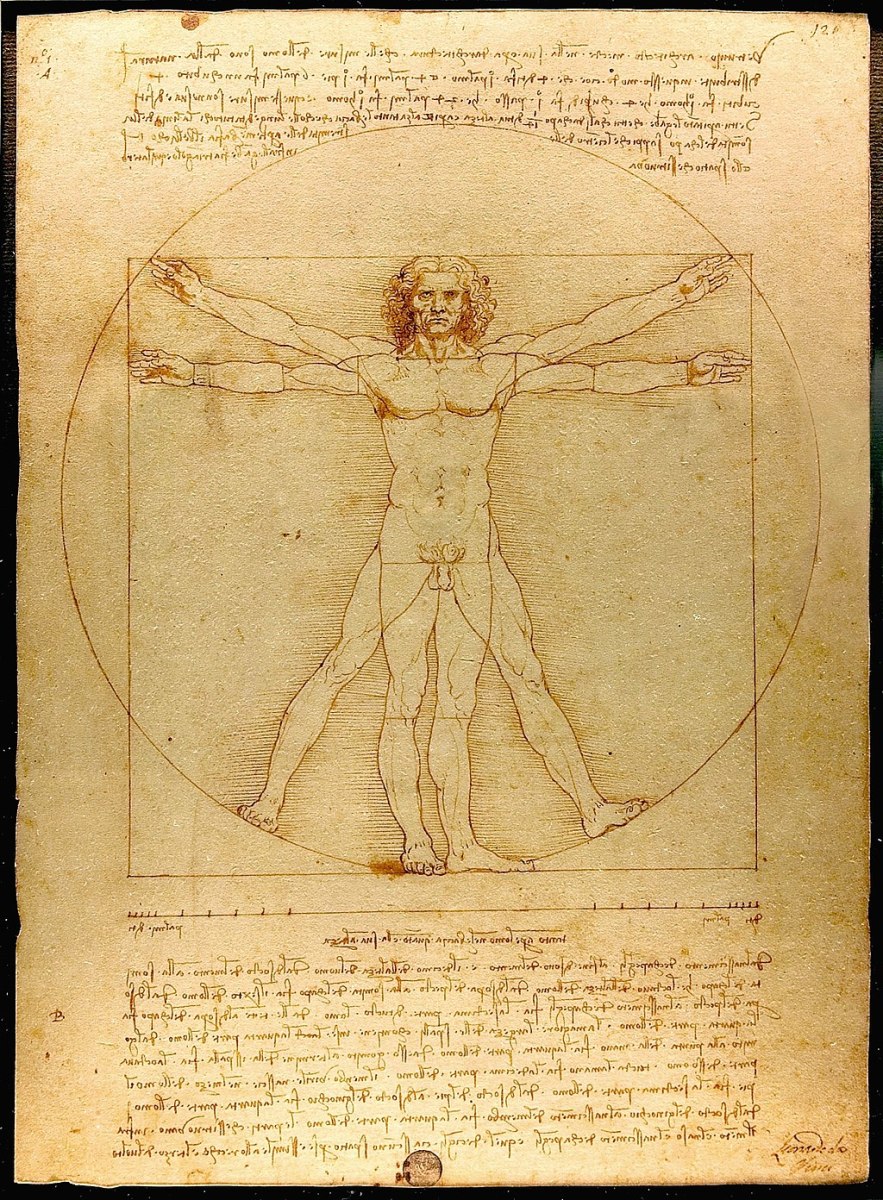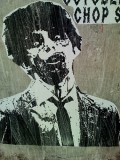Overindulgence Kills: How Horror Fans Killed the Genre
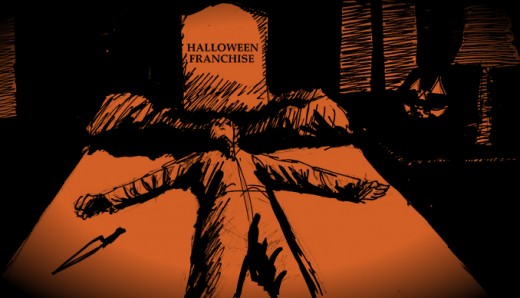
The Evil is Gone...Long, LONG Gone
The plot of Debra Hill and John Carpenter's classic horror film Halloween was never intended to stretch as far as it's been stretched, and in doing so, the quality of its sequels has been spread on very thin.
Some background:
I'd been a hardcore fan of the film since I was a kid in 1985. By the late 80s, I was playing Myers in a local haunted house. I'd rented the VHS version from the corner video store more times than I could count. I waited for the first letter-boxed version to be released on VHS with the same zealotry that kids show today waiting for the new I-phone.
During this time, with little knowledge of the attributes that truly made Halloween scary, I actually wanted Michael Myers to return. But by 1990, I was fearing the release of sequels more than Dr. Loomis feared the release of Michael Myers. I'd come to realize that if we'd let Michael Myers rest in peace in the charred rubble of Haddonfield Memorial Hospital, it would have saved the world a lot of cringing.
In my opinion, the evolution of Michael Myers into this ridiculous superhuman--almost paranormal status has thoroughly ruined the character. Myers was scariest when seen as a human being--a resilient and determined human being, mind you--but still a mortal human being.
Still, the idea of a mortal psycho killer murdering people wasn't in itself a brilliant plot. However, this bare bones movie idea was given vital reinforcements:
- Masterful suspense - Whether it's Laurie Strode banging on the door of the neighbor or the hospital as the shadowy entity closes in on her, the first 2 films are packed with masterful directorial manipulation resulting in very Hitchcockian levels of long lasting tension. Not many films can make the claim that it kept the viewer's on the edge of their seats while someone does their laundry.
- An equally suspenseful soundtrack - Carpenter's genius theme only maximized the visual suspense playing out simultaneously. By the time the opening credits finished rolling, the audience was hooked. Compare this to modern directors who, instead of creating one unique and memorable composition to make the film stand out, attempt to gain nostalgia points by packing every minute of their films with never-ending medleys of popular songs that the director holds dear. (I.E. Rob Zombie's Halloween)
- Infrequent Stingers - Every good horror movie should include a stinger or two to get the blood pumping. However, in modern horror, directors seem to use them as filler, and have become so overused that audiences build up a kind of immunity to them.
- Irreproducible production design - One facet of horror films, and films in general, that dictates its overall quality has been the very format we watch it in. The 1970s are considered by many to be the golden era of horror. Back then, the original Halloween was only viewed in one format--theatrical 35MM. However when home-video became popular in the 1980s, the viewer gained access to the pause and rewind buttons, allowing them to indulge in unintended detail by freezing and rewinding select moments of action, and in doing so--compromise the very intent of directors. Horror films were so much scarier back then because the audience couldn't pause, rewind, and zoom with high-definition impunity. They were at the mercy of the director's uninterrupted masterpiece from opening credits to closing credits. The face of Michael Myers was originally intended to temporarily emerge from and retreat to the shadows like a shark fin from dark waters, resulting in only a vague and terrifying memory that moviegoers took home in their minds.
Halloween and Halloween 2 are basically the same movie. They're one movie split into a "to be continued" series. I often refer to them as Halloween part 1A and Halloween part 1B. When Halloween III was released, the world fudged their Huggies. "Where's Michael Myers?" fans cried. And for a brief moment in time, the original Halloween was successfully exploiting P.T. Barnum's advice to "Always leave them wanting more."
Halloween III was a success in one very important way; it was one of Hollywood's.last efforts at true originality in the horror genre. Halloween III is like that valiant--yet misunderstood--hero attempting to spare the world a global tragedy; like Gregory Peck at the end of The Omen.
Now, after a long, cringe-worthy, painful line of weak and redundant sequels, we're bracing for another punch in the form of Halloween 2018. Will it be more of the same?
Cool References Does Not a Scary Movie Make
Have you ever found yourself the third wheel in a conversation between two people who are cracking inside jokes about something only they know about? Well that's how I assume most people will feel like seeing Halloween 2018.
Hollywood still seems to fail to grasp the simple fact that just because you pack a horror movie with tons of inside references and subtle homages to things that most moviegoers don't care about but makes a small minority of hardcore fans high five each other--it does not make your horror movie scary.
Let's be real--the average moviegoer doesn't know who Nick Castle is, and never cared who plays Michael Myers in any of the Halloween films seeing as playing Myers requires as much talent as playing Bernie in Weekend at Bernie's.
The Halloween 2018 trailer seems to suggest that its creators are intending to go with the now cliche plot of the once helpless damsel in distress turned empowered female aggressor who brings down her tormentor through the use of big guns and cool gadgets.
This similar turn-the-tables plot twist wasn't scary when it was used on Freddy Krueger in A Nightmare on Elm Street, with the victim turning her house into an obstacle course of ridiculous traps. Prepared victim/Victim empowerment plot twists are never scary, and are better suited for action films. I.E. the action packed--but not scary--Terminator 2: Judgement Day.
In viewing the trailer, we can see that some cinematic priorities are in obvious disarray:
The average moviegoer may wonder why Laurie Strode attempts to kill Michael as if he's mortal, yet continue to make the same old, ambiguous one-liners that suggest he's this immortal "Boogeyman" that cannot be stopped.
I'm sure at least some moviegoers will wonder why a trick or treater in 2018 is carrying a large, burdensome, vintage boom box over his shoulder instead of a small, modern music device when he bumps into Michael Myers in yet another unnecessary Deja Vu homage to past films.
Moreover, the fact that the trailer takes it upon itself to actually spoil a perfectly good stinger scare, gives strength to the suspicion that the top priority of this film is to reminisce rather than to scare.
The scene where Michael Myers drops some guy's teeth into a bathroom stall suggests the film, like its predecessors, is also going with the ultra-detailed gore mindset. If you remember, the original Halloween almost never did this. Almost all of Michael's attacks, though hinting to specifics, usually lacked graphic detail. It's clear that Carpenter and Hill were much more focused on the fear of the situation, rather than the realism of body parts making us gag.
The see-less--tremble-more theory is why An American Werewolf in London is one of the scariest werewolf movies, and why the first A Nightmare on Elm Street will always be the scariest. The monster is left in our peripheral, and never seen clearly. And this is most likely why the Myers mask, the American werewolf, and Freddy Krueger were not made obvious in their debut movie posters--if shown at all; it would have given too much. Juxtapose all the Halloween movie posters together, and it's visually obvious how the franchise has deviated from this golden rule of fear.
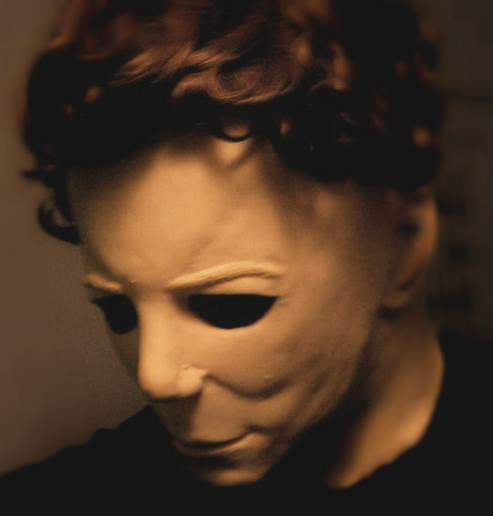
Putting the Shat in Shatner
I purchased the very first version of Michael Myers masks released by Don Post Studios in the late 1980s (then called "The Shape"). When I finally go my hands on it, I was mesmerized--even though "The Shape" looked little like the mask used in the film. It was all that was on the market at the time, and I wasn't complaining.
The day the poster for Halloween IV came out, depicting the original "Shape" from the film, I was excited to say the least. However, when the trailer was released, I was disappointed to see that the Myers mask used in the film looked a little too much like mine as opposed to the original.
From 1978 to 2009, the face of Michael Myers had changed as much as the face of Michael Jackson during that time--extinguishing one of the franchise's main weapons. Watching the masks used in sequels that followed was like watching a reality show where doctors repeatedly try to return some normalcy to the appearance of someone whose addiction to plastic surgery had destroyed their face.
- Halloween I & II - The first mask was the epitome of fright; if death had a face--this was it. A face full of nothingness with two empty eyes like portals to a black soul. By choosing to modify a cheap Captain Kirk mask, John Carpenter caught lightning in a bottle. Part 2 used the same mask, and though it was a bit morphed due to age, wear, and actor, the creepiness remained.
- Halloween IV - With the exception of a returning Donald Pleasance and some pretty nice autumn aesthetics, the film retained little of the original film's creepiness. As for the new Myers mask: if it had been revealed that the Halloween IV mask was actually a life cask of the actor Mike Myers, it wouldn't have shocked me.
- Halloween V - With the now decrepit Donald Pleasance spewing the same old annoying, hackneyed phrases, John Carpenter, realizing that caving into pressure to reintroduce Myers into the franchise was a huge mistake, quietly slips out the back door and washes his hands of the series. The Halloween V mask was bad, looking like someone put a wig on one of the entombed victims of Pompeii.
- Halloween VI - In a panic to save the franchise, desperate writers scrap any link to Carpenter's original plot--which was never intended to go past part 2-- and rewrite Myers as the victim of a curse. The Halloween VI version of the Myers mask made it look as if he traveled to Haddonfield by motorcycle during a hurricane.
- Halloween H20 - In an attempt to make the dying franchise hip, LL Cool J was cast. As far as the new Myers mask--it just looked like the Halloween VI mask after he parked the motorcycle, entered a diner, and patted his hair down a little. Like Halloween V and Halloween VI, artists overcompensated on the intensity of the lips.
- Halloween Resurrection - Halloween Resurrection is, in my opinion, the rock bottom of Halloween movies. If the casting of Tyra Banks, and Busta Rhymes isn't a sign of a ship taking on water, then I don't know what is.On top of this, the Resurrection mask featured sharp drag queen eyebrows, dark Herman Munster lips, and more overcompensation in the details of the chin which made Myers look like he could begin crying at any second.
- Rob Zombie Remake - The Rob Zombie version looked like we all felt when we watched the remake. It was overcompensated by non-frightening detail, covered in what looked like baby shit, and worn by an ridiculously tall actor--which, at best, took attention away from another substandard version of the Myers mask. Regardless, the idea of remaking Halloween has proven to be as foolish an idea as remaking Psycho, Carrie, The Amityville Horror, The Island of Dr. Moreau, The Omen, and other great films. The amount of sheer delusional narcissism it takes to believe that just because you like horror movies--means you can improve on some of the greatest films of history, boggles the mind--but I digress.
I must say that, though the latest version of "The Shape" fails to bring the scary, it is probably the closest I've seen come to the original to date.
Some might say "But the artist had access to the original mask!"
Let's be real; it doesn't matter if the creator had access to the original mask or not; simple access to doesn't equate a good final product.
Some may argue that the mask in the new film is supposed to be cared for differently than the real screen-used mask was.
"in our minds it was kept in a bag, in a box, in an evidence room for quite a long time. Being covered and away from UV light, it was a little more protected than a mask that was just laying out would be, so we took that into account" -FX Designer Chris Nelson
I've collected masks since the 1980s--and, depending on quality and care, have seen them rot before my eyes. In any setting, they age smoothly, not rugged like a mummified corpse. I get that they're trying to be accurate, and hey, I'm all about accuracy. However, if someone wants to see what the original Halloween mask would look like after decades, all they have to do is, well....look at it. Stuntman Dick Warlock kept it for years after Halloween II wrapped up.
- Original Michael Myers Mask from Halloween Unearthed - MovieWeb
After more than a decade, the original mask that Michael Myers wore in the first two Halloween movies has resurfaced.
If we're really going for accuracy, let's not forget that Myers stole this mask from a hardware store--which any mask collector would know are usually not exactly havens for quality latex masks.
But let's say this thin, cheap rubber mask somehow miraculously makes it past all those years intact--the chances of that exact mask ending up in the hands of Myers decades later is like a million to one odds...on top of the bleak chance the mass produced mask even survives time alone.
What about the clothes that Myers wears? Why go for overalls again? Why not more normal attire that would blend in with society better? Some dockers and a polo, perhaps.
Isn't it highly improbable that a woman in her late 50s, who was attacked by a man one night long ago when she was a teenager, would spend the next 40 years obsessing over his escape?...a potential escape which she has no real, explainable reason to fear occurring? Actual women have gone through way worse than what the fictional Laurie Strode went through and have fully recovered and put the past behind them.
It's 2018, hardware stores don't sell Halloween masks anymore, and brick and mortar costume stores are scarce. Isn't a murderer in search of a disguise these days more likely to hit the first Party City he sees and grab whatever's convenient, I.E. most popular? A horse mask? An over-sized plush emoji mask? One of those evil clown masks that try to look scary but just look dumb?
The point is, we can be accurate with aesthetics, but if we omit the resounding improbability of all this other stuff actually happening--well we're just not really being accurate when all is said and done.
What's Really Scary About Halloween 2018?
What do I fear regarding the latest Halloween film?
I fear what I call high school reunion syndrome. I fear writers writing for the sake of appeasing a small group of hardcore fans who cannot be disappointed as long as original actors are involved regardless if they're now 90 years old, morbidly obese, or have only one leg.
I fear the franchise remaining in the hands of writers who will compensate for their inability to create and build good suspense, with obsessive detail for all things gross, exaggerated knife sounds and loud stingers.
Debra Hill and John Carpenter could have given Michael Myers a Richard Nixon mask in 1978, and they still would have made a great horror movie. Why? Because they knew how to build and sustain true suspense that can suck you in with the storyboards alone.
Today, we call the original Halloween a horror classic, but what got it to that level was that it was a well-balanced masterpiece of suspense, made by people who possessed a genuine knowledge of what really scares people.
I know I'll take the slings and arrows of Halloweeners who have a hard time tolerating opposing opinions, but for the above reasons, it's impossible to add to the Halloween franchise with anything even competitive in quality to the original. However, rest assured, Hollywood promises to try, but it's malignant deficiency of creativity assures that all attempted sequels, prequels, and remakes linked to this franchise will only emphasize the unparalleled quality of the original, and a golden era that began dying the moment the first VCR was sold.
Honestly, with all the utter torture Hollywood has put fans through with this franchise, can you blame me for flinching when I hear of yet another version coming out? History teaches we should brace for what--given the previous attempts--will most likely be yet another Hollywood bowel movement to spew from theaters?
Still, I do plan on giving Halloween 2018 a fair chance to impress me; who knows? maybe, somehow, it won't be as bad as it looks in the trailer. But, chances are, I'll sit staring at the screen the way Michael Myers sat staring out of the sanitarium window. A blank, pale, emotionless face. Waiting...and waiting...and waiting.
